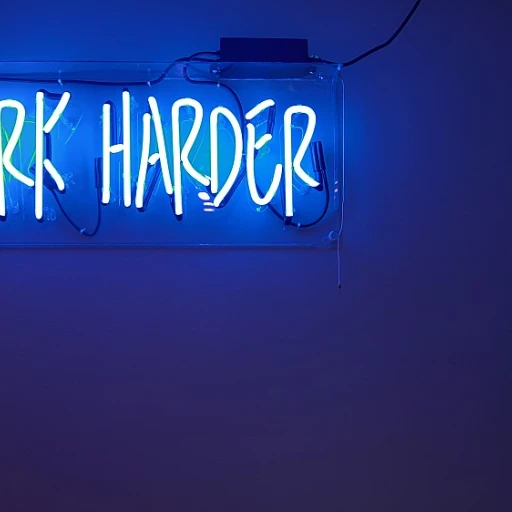Understanding the Impact of Hiring Delays
The Hidden Costs of Hiring Delays
In today's fast-paced job market, the repercussions of hiring delays can be significant, affecting not only the efficiency of the recruitment process but also the overall candidate experience. When organizations take too long to fill positions, they risk losing top talent to competitors who are quicker to make offers. This not only impacts the quality of hires but can also lead to increased recruitment costs and a strained team that must cover the workload in the interim.
Hiring delays can also tarnish a company's reputation. Candidates who experience long wait times or lack of communication may share their negative experiences online or with peers, deterring future applicants. This is where the importance of
boosting the hiring experience becomes evident. A streamlined and efficient hiring process not only attracts high-quality candidates but also enhances the employer brand.
As we delve deeper into the hiring process, it's crucial to consider how streamlining recruitment and leveraging technology can mitigate these delays. By addressing these challenges head-on, companies can create a more efficient and appealing hiring experience for all parties involved.
Streamlining the Recruitment Process
Simplifying Application Processes
One of the significant ways to streamline the recruitment process is by simplifying application procedures. Complicated and lengthy application forms can discourage potential candidates from applying, leading to a smaller talent pool and longer hiring timelines. Optimizing these forms to include only the necessary information can make the process more efficient and encourage more qualified individuals to apply.
Enhancing Communication with Candidates
Clear and timely communication with candidates is essential to expedite the hiring process. By maintaining regular contact throughout the recruitment stages, candidates stay engaged and informed, reducing the likelihood of losing top talent to competitors. Implementing a structured communication plan, including sending prompt interview invitations and updates on their application status, can significantly improve the overall experience.
Implementing Effective Interview Techniques
Rethinking interview procedures is another crucial aspect of streamlining recruitment. Efficient interview techniques, such as panel interviews or asynchronous video interviews, can save time and resources. Training interviewers to focus on key competencies and adapting interviews to fit within a tight schedule ensures that the process remains efficient without compromising on evaluating candidate quality.
For more insights on refining the recruitment journey, consider reading our
guide to success, which delves deeper into strategies for boosting the hiring experience.
Prioritizing Internal Collaborations
Effective collaboration between hiring teams and other departments, like HR and management, is essential for a smooth recruitment process. Establishing clear roles and responsibilities, as well as regular touchpoints to discuss candidate evaluations, can prevent miscommunications and delays. By ensuring everyone is aligned on the goals and progress of the hiring process, organizations can reduce the time to hire and improve overall efficiency.
Leveraging Technology for Faster Hiring
Embracing Technological Advances in Recruitment
In the fast-paced world of recruitment, leveraging technology has become imperative for organizations that aim to minimize delays in their hiring process. The integration of advanced tools and software not only accelerates various stages of recruitment but also enhances the overall hiring experience for both recruiters and candidates.
One effective method is to incorporate applicant tracking systems (ATS). These platforms streamline the management of candidate data, auto-filter applicants based on predefined criteria, and aid in scheduling interviews seamlessly. By reducing manual workloads, recruiters can focus more on engaging with top talent rather than being bogged down with administrative tasks.
Furthermore, harnessing artificial intelligence (AI) can significantly alter the landscape of talent acquisition. AI-powered tools can analyze vast data sets to predict the best-fit candidates, personalize communication, and provide valuable insights into hiring trends. This evolution in technology enables recruiters to make more informed decisions faster.
Collaboration tools should also be part of the equation. By using platforms that enable real-time feedback and communication among team members, businesses can cut down approval times and efficiently coordinate interviewer schedules. This kind of integration ensures a cohesive approach to building teams, ultimately reducing time to hire.
As recruitment technology continues to evolve, it is essential for organizations to stay informed about emerging tools and techniques. To gain further insights into how feedback improves the hiring process, explore our detailed analysis on
the secrets of hiring experience feedback.
Integrating these technological advancements not only accelerates recruitment but also positions a company as forward-thinking, which is crucial for maintaining a competitive edge in the market.
Building a Strong Employer Brand
Fostering a Positive Employer Identity
In the quest to speed up the hiring process, one often overlooked factor is the strength of a company's employer brand. A compelling employer brand not only attracts high-quality candidates but also expedites the recruiting process by creating a pool of interested candidates who are already excited about the possibility of working for your organization.
A strong employer brand serves as a magnet for talent. When candidates perceive your company as an appealing place to work, they are more likely to apply quickly when positions open up. This can reduce the time necessary to fill positions, as enthusiastic applicants may already have familiarity with your company’s culture and values.
To cultivate a strong employer brand, it’s crucial to convey your company's mission, values, and culture authentically. Clearly articulate what sets your company apart and why a candidate should be motivated to work there. This involves not just what you communicate directly on your careers page, but how your organization is portrayed across various channels, including employee testimonials, social media presence, and any public relations efforts.
Moreover, consistency in your messaging is key. Ensure that every interaction a candidate has with your brand reinforces the same core values and positive perceptions. This includes their experiences during the job search and application processes, the promptness of communication, and transparency throughout the hiring stages. All these components contribute to a cohesive narrative that defines your company as a desired workplace.
By creating an attractive and consistent employer brand, you effectively enhance every stage of the hiring process, paving the way for a smoother, faster, and more positive experience both for the candidates and your recruiting team.
Social Media: Revolutionizing the Recruitment Landscape
In the digital age, social media has become an invaluable tool for recruiters looking to speed up the hiring process. Platforms like LinkedIn, Twitter, and even Facebook are increasingly being used to scout for talent, connect with potential candidates, and promote job openings.
Expanding Reach and Visibility
One of the key benefits of leveraging social media is the ability to expand your reach and engage with a more diverse pool of candidates. By sharing job listings on popular social media platforms, companies can instantly increase their visibility and attract attention from qualified professionals who may not actively seek job boards. This dynamic interaction fosters a more proactive recruitment approach, allowing employers to target individuals with specific skills and backgrounds.
Showcasing Company Culture
Social media serves as a valuable channel to showcase a company's culture and values. Visual content, such as behind-the-scenes photos, employee testimonials, and videos portraying life at the company, help create an authentic story for the employer brand. These narratives can entice prospective candidates who resonate with these values, ultimately speeding up the hiring process by attracting individuals most aligned with the organizational culture.
Building Relationships and Engaging in Conversations
Beyond broadcasting job postings, social media also enables companies to engage with potential candidates in a more conversational manner. Participating in industry-related discussions, sharing thought leadership content, and responding to comments can foster relationships with prospective hires. This engagement can make candidates feel more connected and invested in the company before they even apply, paving the way for a smoother hiring journey.
Utilizing Social Media Analytics
Social media platforms are equipped with analytics tools that provide insights into the performance of recruitment posts. Recruiters can track engagements, reach, and audience demographics, helping them fine-tune their strategies to attract the right candidates more efficiently. These insights play a valuable role in continuously optimizing the hiring process in real-time, ensuring timely adjustments to strategies to maintain a competitive edge.
Measuring Success: Time Hire Metrics
Evaluating the Efficiency of Your Hiring Process
To effectively assess the speed and efficiency of your hiring process, it's essential to focus on measurable metrics that reflect the time it takes to find and onboard the right talent. These metrics can provide valuable insights into areas where improvements can be made and help ensure a smooth recruitment experience.
Firstly, look into the average time to fill a position. This metric helps you determine how long it takes from when a job is posted to when the candidate accepts the offer. It provides a clear picture of potential bottlenecks, whether it's in the interview stages or decision-making processes. Shortening the average time to fill not only enhances the candidate experience by reducing uncertainty and wait times but also prevents losing top talent to competitors.
Another crucial metric is the time to hire, which measures the period from when a candidate applies to when they receive an offer. This metric highlights the efficiency of the internal recruitment team's operations and their ability to quickly move right-fit candidates through the hiring funnel. By streamlining workflows and leveraging technology, as previously discussed, you can reduce unnecessary delays and optimize this metric.
Additionally, monitoring the candidate's time in each recruitment phase can identify specific stages that take longer than expected. By evaluating this data, you can implement targeted improvements, such as more efficient scheduling tools or automated assessments, to expedite the process.
Lastly, gather feedback from both candidates and hiring managers to understand their perspectives on the timeline and experience. Insights gained from these discussions can illuminate frustrations or inefficiencies and help you tailor your strategies to meet expectations better.
In summary, by carefully analyzing these metrics and making informed adjustments, companies can substantially speed up their hiring processes, ultimately fostering a more efficient and positive experience for all involved.














